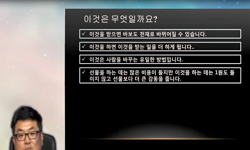The four-river refurbishment project, implemented by the Lee, Myung-Bak administration, commenced in 2009 and was completed in 2011. During the past three years, the Ministry of Land, Transport and Maritime Affairs, Dept. of Public Relations has spent...
http://chineseinput.net/에서 pinyin(병음)방식으로 중국어를 변환할 수 있습니다.
변환된 중국어를 복사하여 사용하시면 됩니다.
- 中文 을 입력하시려면 zhongwen을 입력하시고 space를누르시면됩니다.
- 北京 을 입력하시려면 beijing을 입력하시고 space를 누르시면 됩니다.

공공정책의 대 국민 설득커뮤니케이션 전략과 효과에 관한 연구 -이명박 정부의 4대강 사업 분석을 중심으로- = Study of Persuasive Communication Strategy and Effect Regarding National Promotion of Public Policies -With Special Emphasis on the Analysis of the Four River Refurbishment Project of Lee, Myung-Bak Administration-
한글로보기https://www.riss.kr/link?id=A99865662
- 저자
- 발행기관
- 학술지명
- 권호사항
-
발행연도
2013
-
작성언어
-
- 주제어
-
KDC
300
-
등재정보
KCI등재후보
-
자료형태
학술저널
- 발행기관 URL
-
수록면
67-100(34쪽)
- 제공처
-
0
상세조회 -
0
다운로드
부가정보
다국어 초록 (Multilingual Abstract)
The four-river refurbishment project, implemented by the Lee, Myung-Bak administration, commenced in 2009 and was completed in 2011. During the past three years, the Ministry of Land, Transport and Maritime Affairs, Dept. of Public Relations has spent over \20,000,000,000- on policy advertisement. However, according to the analysis of advertisement effect conducted by Korea Press Foundation on Oct. 2011, the majority of public were either unaware of or had a negative view of the four-river advertisement program. The effect was not in proportion to the budget used by governmental advertisement department. The purpose of this study is to diagnose the strategical problems of this government`s persuasive communication regarding the Four-river Refurbishment Project and to search for a more effective policy advertisement strategy. The previous analysis and evaluation studies of the government`s persuasive communication strategy were mainly just two-frame based in relation to the triple crossroads namely, ``Government-Public``, ``Government-Media, and Media-Public. However, this study attempts a comprehensive study of the triple crossroads that offers an integrated frame of Government-Media-Public in order to conduct a advertisement strategy analysis of the Four-river Refurbishment Project. For this purpose, the persuasive communication of the government`s Four-river Refurbishment Project were first categorized, the public survey results conducted by the Korea Press Foundation reanalyzed and its results used as basis for analysing the problems related to an effective persuasive communication. Furthermore, the perception of the advertisement related personnel of the competent department for the Four-river Refurbishment Project were researched and analyzed using an in-depth interview. Also, a survey was conducted on how media reporters, accredited to the competent department, viewed the advertisement strategy in order to study its problems. The results of the study reveal that the advertisement strategy for the Four-river Refurbishment Project failed to properly design an accurate advertisement program that includes a sur vey of public opinion and the creation of a forum for public debate on the subject. It also failed to properly establish a long-term, accumulative, dynamic communication strategy. Instead, it choose to follow the customary advertisement method and v er ification study of the advertisement effect was not performed. Results supporting these findings were drawn from surveys of accredited r eporters and in-depth interviews of advertisement related personnels. As a result, extensive modifications to the strategy advertisement methods for future major governmental national policy projects are inevitable. In future, a more systemic advertisement program need to be established and, to do this, diverse public opinion need to be gathered on one hand while a more professional and effective advertisement strategy that takes into account factors such as decision-making, mass-media utilization, and usefulness is needed on the other hand.
동일학술지(권/호) 다른 논문
-
국제원조 현장의 협상사례: 한국정부의 아프가니스탄 지방재건팀 (PRT) 운영 경험
- 한국협상학회
- 임원혁
- 2013
- KCI등재후보
-
한국언론의 보수와 진보 프레임에 관한 분석적 고찰 -조선일보와 한겨레신문의 한미 FTA 사설 분석-
- 한국협상학회
- 심흥식 ( Heung Sik Shim )
- 2013
- KCI등재후보
-
- 한국협상학회
- 심준섭
- 2013
- KCI등재후보
-
소비자 불만에 대처하는 다른 방법들 : Facework에 대한 반응의 문화적 차이
- 한국협상학회
- 오세형
- 2013
- KCI등재후보




 KISS
KISS






